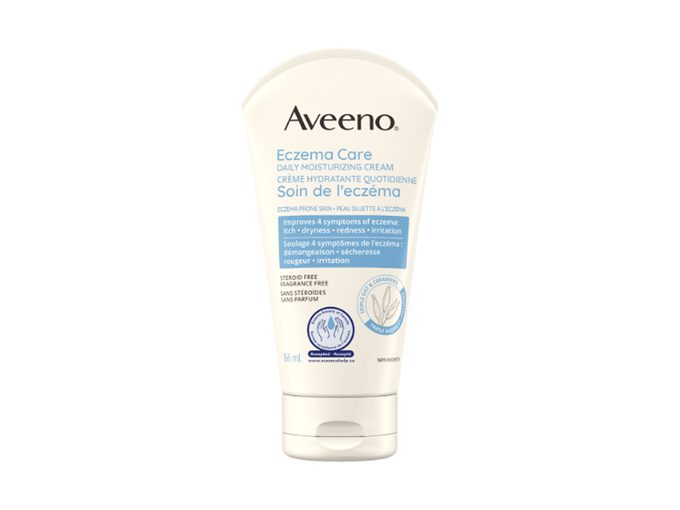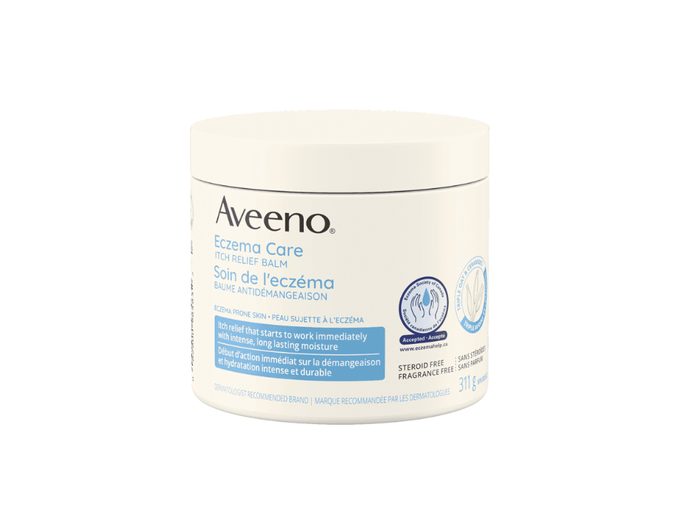#SkinVisibility: How Eczema Appears in Different Skin Tones
From Canadian skincare leader, the makers of AVEENO® and their Skin of Colour Hub.
![Aveeno[58][90]](https://www.besthealthmag.ca/wp-content/uploads/1990/12/aveeno5890.png?fit=680%2C510)
Around a quarter of Canadian sensitive skin suffers have experienced eczema, with more than 85 percent dealing with burdensome symptoms, like itching and redness, every day. Of this group, 21 percent were those with darker skin tones.*
Yet, while most of the assessment and treatment protocols for eczema work well for light skin tones, they fall short for skin of colour.
To better understand this reality, Canadian skincare leader, the makers of AVEENO®, along with board-certified dermatologists, continue to build awareness around how eczema presents on different skin tones to close this educational gap in skin health.
Everything you need, all in one place
The AVEENO® Canada Skin of Colour Hub was created as a “one-stop shop”, sharing photos and symptoms of eczema, management options and more to support Canadians with skin of colour on their eczema journey.
Early this year, AVEENO® Canada released their #SkinVisibility table book, which documents lived experiences from patients, insight from experts, a portfolio of reference images and specialized care tips – all available on the AVEENO® Skin of Colour Hub. Beyond the tablebook, the hub is intended to be a resource for those on the onset of their eczema journey. It shares tools that allow everyone, regardless of colour, to identify symptoms, develop a management plan and find solace in their own skin.
![Aveeno Img2 1000x750[30]](https://www.besthealthmag.ca/wp-content/uploads/2023/12/Aveeno-IMG2-1000x75030-1.jpg?fit=680%2C510)
Let’s go back to the basics—what is eczema?
Dr. Sonya Abdulla, a double board-certified dermatologist in Canada and the US, describes eczema as a “chronic inflammatory condition characterized by inflamed, itchy patches on areas of the skin like the face and folds”. In light skin, she notes, the troubled areas typically appear red and scaly, while on darker skin tones, they appear with a purple to grey, or ashy hue.
Eczema is a result of a disruption to the skin barrier (the outer layer that retains moisture and protects us from irritants) and while the cause of eczema is mostly unclear, there are common triggers that people of all skin tones can pay attention to.
Things like extreme weather exposures—both hot and cold—fragrances, environmental allergens and pollutants, food sensitivities, friction and rubbing, even stress, can all contribute to the worsening of symptoms.
Some key markers for identifying eczema are extreme itching, thickened skin, darkness around the eyes, small bumps on the abdomen, arms, and legs as well as raised areas that develop around hair follicles, resembling goosebumps.
For skin of colour, though, there are other specific markers that aren’t well-identified or broadly discussed.
The diagnosis problem of eczema in darker skin
Dr. Geeta Yadav, a board-certified dermatologist and founder of FACET Dermatology, says a major concern for people of colour is the discolouration that occurs in the aftermath of an eczema flare-up, as a result of the inflammation.
With irritation-induced scratching, the affected area and surrounding skin develops hyperpigmentation that can last for months—even if the eczema has been treated. Since these pigmentary changes are so long-lasting, Dr. Yadav stresses the importance in diagnosing and treating eczema as early and aggressively as possible.
The problem is misdiagnosis, underdiagnosis or even no diagnosis have long been a barrier for treating eczema in skin of colour.
A key reason for this, according to the CDA, is physicians have historically been trained to diagnose eczema on white skin because that’s what they’ve studied in medical school textbooks. In fact, less than five percent of imagery found in these texts show conditions on non-white skin tones.*
This lack of inclusivity in educational resources is foundational for why skin of colour is not diagnosed or treated properly—leading to the resurfacing of the problems highlighted by Dr. Yadav. Without proper knowledge, doctors are less likely to diagnose the condition properly and those affected end up suffering longer-term.
Not only is “early intervention key to address symptoms and prevent long-term consequences [like discolouration], but also improve that person’s quality of life”, states Dr. Yadav.
Dr. Abdulla agrees and says that communicating your symptoms to your healthcare provider and the impact they have on your quality of life can go a long way in treating your eczema.
“Keep in mind, treatment success means improvement or resolution of the signs and symptoms”, says Dr. Abdulla. Since “itch is the predominant symptom seen with eczema, [and] much of the inflammation may be difficult to appreciate in darker skin tones, the degree of itch can help highlight the severity.”
Living with it—from a patient’s POV
Dermatologists insist that the difficulty in diagnosing eczema in skin of colour is common and that no one should feel they have to face it alone.
In fact, to underscore this, the AVEENO® #SkinVisibility tablebook shares stories of people in the community with advice for identifying and managing this skin condition.
Ruchika Karnani’s eczema was reported as almost exclusively stress-induced, with flare-ups worsening with changes to diet, environment, climate and ingredients. She shares that with her eczema presenting in unusual ways, she had to go through a lot of trial and error. While she waited for a diagnosis, she began to make small changes herself—reworking her diet and incorporating mindfulness practices in her daily routine.
“I [aimed] to keep my stress as controlled as possible while also living a generally healthy lifestyle to further reduce the risk of an outbreak”, says the woman. After four months of doctor’s office visits, prescription trials and holistic treatments, she finally received a diagnosis.
What she learned from this experience: “Expert opinions are crucial but often take time to get…so catering your daily routine to be in favour of healing in the interim, even in the smallest ways, can help mitigate factors that complicate the diagnosis process.”
For another patient, Natasha Kaycee, eczema was more than just a skin menace, it was a blow to her confidence. With random flare-ups that would disappear after weeks, her hard-to-diagnose condition was often conflated to dry skin in need of serious moisture.
She recalls the doctor viewing her eczema as ‘not a big deal’: “It took over two years to get diagnosed…when one doctor took my concerns seriously and evaluated me, [helping] me manage the flare-ups and avoid them as much as I can.”
Dr. Geeta Yadav also encourages seeking a second opinion. “Though it can feel intimidating to contradict a medical professional, it’s critical to advocate for yourself if you think something isn’t right with your treatment or care.”
You can read about more patient experiences in the AVEENO® #SkinVisibility tablebook, available for download in the hub.
So, where to go from here
While there is no single solution for dealing with eczema, there are a lot of coping strategies—whether it be limiting exposure to personal irritants, sticking to a skincare routine or practicing self-care. What’s important is finding what works for you.
The makers of AVEENO® have curated eczema identification and management tips for skin of colour that are easy to follow and implement. Not to mention, their Eczema Care line is well-known (and loved) by those dealing with this condition, thanks to the nourishing ingredients, like colloidal oatmeal and vitamins B and E, found in the formulas. However, you should consult with a healthcare professional for an official eczema diagnosis.
The makers of AVEENO® have shared some helpful tips for where to start:
- Simplify your skincare routine with barrier-targeted ingredients. Think: simple cleanser, followed by a moisturizer that will help restore hydration and rebuild resilience. A medicated moisturizer is considered first-line therapy for treating eczema.

Our Pick: Eczema Care Daily Moisturizing Cream
- Identify potential triggers and do your best to limit your exposure to them
- Shower in lukewarm, not hot, water
- Incorporate clinically-supported colloidal oatmeal to help strengthen the skin’s moisture barrier, soothe dryness, support the skin’s microbiome and provide temporary relief of symptoms

Our Pick: Aveeno®’s Eczema Care Itch Relief Balm
- Protect your skin from both hot and cold weather with the use of SPF in the heat, and outerwear accessories in the cold
Following these tips can not only improve your eczema but can also improve how much it interrupts your life. The greater awareness around diagnosing skin of colour with eczema and the community-powered confidence necessary to find peace with this skin condition, is exactly why the makers of AVEENO® developed the Skin of Colour Hub.
Find out more about this initiative at: aveeno.ca/skin-hair-solutions/eczema and aveeno.ca/skin-hair-solutions/eczema/skin-of-colour.
*In partnership with AVEENO® Canada, Leger conducted an online survey among a representative sample of 1,501 Canadians, 18+, who experience skin sensitivity in the summer and/or winter months. Respondents are members of Leger’s online panel. The survey was conducted in English. For comparative purposes, though, a probability sample of 1,501 respondents would have a margin of error of ±2.5 per cent, 19 times out of 20.





